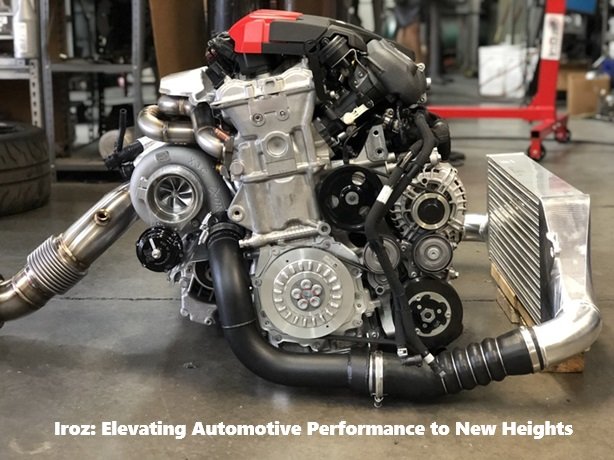Whether you’re moving to a new home, taking equipment to work, or simply running errands, transporting items by car requires careful planning. It’s not as simple as loading everything into the trunk and hitting the road. From properly securing your cargo to considering the weight and distribution of your load, there are several factors that contribute to safe and efficient transportation.
In this article, we’ll explore the key tips and strategies from Rena Monrovia When you Transport Something By Car …, a well-known expert in logistics and safe transportation, on how to transport goods by car securely and efficiently.
Why Transporting Items by Car Requires Care
When you’re transporting goods in your car, there’s more to think about than just getting from point A to point B. Ensuring the safety of your cargo and maintaining control of your vehicle is crucial for a smooth journey. Whether it’s fragile items, heavy equipment, or everyday purchases, understanding how to load and secure items properly will help prevent accidents, damage to your goods, or harm to yourself.
Common Risks of Poorly Secured Cargo
- Shifting Items: Unsecured items can shift during the ride, leading to distractions or even damaging your vehicle’s interior.
- Imbalanced Load: Poor weight distribution can affect your vehicle’s handling, making it harder to control and increasing the risk of accidents.
- Inadequate Space: Overloading the car may obstruct your rearview mirror, reducing visibility and safety on the road.
Top Tips for Transporting Goods by Car
Here are the top recommendations from Rena Monrovia on how to safely and efficiently transport goods by car.
1. Plan Your Load Before You Start
Before you start packing your car, take a few minutes to plan how you’re going to load your items. Make a list of everything that needs to be transported and consider the size, weight, and fragility of each item.
- Group Similar Items Together: This will help you organize your load more efficiently and avoid wasting space.
- Consider Fragility: Place fragile items like glassware or electronics in secure spots to avoid damage during transportation.
2. Distribute the Weight Evenly
One of the most important things to remember when transporting goods by car is to evenly distribute the weight of your cargo. Uneven weight distribution can cause your car to handle poorly and increase the risk of tipping over.
- Heavy Items at the Bottom: Always place heavier items at the bottom and closer to the car’s center. This provides more stability and keeps the car balanced.
- Avoid Overloading One Side: Spread the weight evenly across the vehicle to prevent it from swaying or losing balance during turns.
3. Secure Your Cargo
Ensuring that your items are properly secured is critical to avoiding any accidents or damage during the ride. Loose items can shift around, especially during sudden stops or sharp turns, and this can not only damage your goods but also distract or harm the driver.
- Use Tie-Down Straps: Use tie-down straps or bungee cords to secure larger items. Attach these to anchor points in your car to keep the load from moving.
- Blankets and Padding: Use blankets, bubble wrap, or padding between items to protect fragile goods and reduce the chances of them breaking or getting scratched.
4. Keep Visibility in Mind
Maintaining clear visibility through all mirrors is a crucial safety factor when transporting cargo by car. Overloading your car to the point where it blocks your rearview mirror or windows can significantly reduce your ability to drive safely.
- Don’t Block Your Rearview: Always leave enough space so that your rearview mirror gives you a full view of the traffic behind you.
- Use a Roof Rack if Needed: For larger items that take up too much space inside the car, consider using a roof rack to keep your rear and side mirrors clear.
5. Avoid Overpacking Your Car
Overloading your vehicle can affect not only your visibility but also the overall safety of your driver. Cars have weight limits, and exceeding them can strain your engine and brakes, making the vehicle harder to control.
- Check Your Car’s Load Limit: Consult your car’s manual for its recommended weight limit and avoid exceeding it.
- Use a Trailer if Necessary: If your load is too heavy or bulky for your car, consider using a small trailer for transportation.
6. Protect Your Car’s Interior
Heavy or sharp-edged items can easily scratch, tear, or damage your car’s interior if not packed carefully. Protecting your vehicle’s seats, flooring, and other interior components should be a priority when transporting large or bulky items.
- Use Floor Mats and Covers: Cover the seats and floors with protective mats or blankets to prevent stains, scratches, or dents.
- Avoid Sharp Objects on Leather Seats: Place cardboard or other padding under sharp or rough objects to protect delicate surfaces.
7. Drive Carefully with Cargo
When your car is loaded with items, your driving habits should change to accommodate the extra weight and balance. Heavier cars take longer to stop, and sharp turns can cause poorly secured items to shift or tip over.
- Brake Gently: Allow extra distance when braking to account for the added weight of the cargo.
- Avoid Sudden Turns: Take turns slowly and smoothly to prevent items from shifting or causing the car to lose balance.
- Monitor Tire Pressure: Heavier loads can affect tire pressure, so check that your tires are properly inflated before starting your journey.
8. Use Roof Racks for Larger Items
For items that are too large or too awkward to fit inside your car—such as bicycles, large boxes, or sports equipment—using a roof rack is a great solution. However, it’s important to secure items properly to prevent them from falling off or causing accidents.
- Tie Items Down Securely: Use strong straps to attach items to the roof rack and double-check that they’re fastened tightly.
- Mind the Height Clearance: Be cautious of overhanging branches, parking garages, and low bridges, as large items on your roof rack can increase your car’s height.
Safety First: Legal Considerations for Transporting Cargo by Car
Depending on the size and type of cargo you’re transporting, there may be specific legal requirements or regulations you need to follow. In some regions, transporting certain goods may require special permits or safety measures.
- Ensure Proper Visibility: In many areas, it’s illegal to drive with obstructed rear visibility. Be sure that your load doesn’t block your mirrors or windows.
- Follow Weight Limits: Overloading your vehicle beyond its weight limit can not only damage the car but also result in fines if caught by authorities.
Common Mistakes to Avoid When Transporting Goods by Car
Even with the best intentions, some common mistakes can lead to accidents or damage. Here are a few to avoid:
- Not Using Proper Straps or Tie-Downs: Relying on improvised solutions like ropes or loose cords can cause items to shift or fall out during transportation.
- Ignoring Load Limits: Overloading your car can lead to increased wear and tear on your vehicle and make it more difficult to control, especially during sudden stops.
- Packing Fragile Items Without Protection: Always wrap fragile items in protective materials to avoid breakage during transit.
Conclusion
Transporting items by car, whether it’s a small errand or a large moving project, requires proper planning, secure packing, and safe driving habits. By following these expert tips from Rena Monrovia When you Transport Something By Car …, you can ensure that your cargo arrives safely at its destination without causing damage to your vehicle or risking accidents on the road. Always remember to plan your load, secure your items properly, and drive with care when transporting goods by car. Rena Monrovia When you Transport Something By Car …,
FAQs
1. What should I do if I need to transport oversized items by car?
For oversized items, consider using a roof rack or trailer. Always ensure that the items are properly secured with strong straps.
2. How can I protect fragile items during transportation?
Use blankets, bubble wrap, or foam padding to protect fragile items, and place them in secure spots in the car where they won’t move around.
3. Can overloading my car cause damage?
Yes, overloading your car can strain the engine, brakes, and suspension, and affect your ability to control the vehicle safely.
4. Should I use a trailer for heavy items?
If your load exceeds the car’s weight limit or is too bulky to fit inside, using a trailer is a good option for safe transportation.
5. What’s the best way to prevent items from shifting during transportation?
Use tie-down straps, bungee cords, or cargo nets to secure your items and keep them from moving around during the drive.
Also, Read. Get the Best Deals on TheSparkShop.in Earbuds Today!




